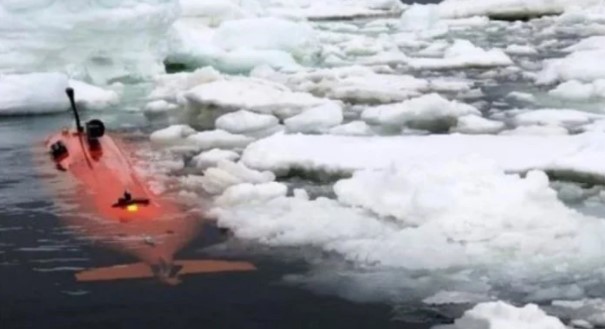Berlin. Using the European Southern Observatory’s (ESO) VLT telescope located in northern Chile, a team of scientists was able to observe it from Earth for the first time. A dark spot on NeptuneAs well as A Small bright spotThat’s according to a study published Thursday by Nature Astronomy.
This is the first time a black spot has been observed on a planet through a ground-based telescope. “These occasional events were detected against the blue background of Neptune’s atmosphere A mystery to the astronomical community These new results provide additional clues about its nature and origin,” says an ESO statement.
Large spots are common occurrences in the atmospheres of the giant planets, the famous Great Red Spot on Jupiter being the most iconic. In 1989, thanks to observations by NASA’s Voyager 2, a dark spot was discovered on Neptune..
ESO remembers that The stain disappeared after a few years. “Since the first discovery of a dark spot, I have always wondered what these elusive short-lived dark events are,” said Patrick Irwin, a professor at the University of Oxford in England and the study’s lead researcher.
Using data from ESO’s VLT, Irwin and his team ruled out the possibility of black spots being caused by “clearness” in the clouds.
📢 Astronomers observe a mysterious dark spot – and a nearby bright spot #NeptuneAtmosphere from Earth for the first time 🌍
The #VLT The observations shed new light on the nature of such points, which have long puzzled scientists. https://t.co/f0YYB3gw0J pic.twitter.com/r9YcrkwEz3
– that) August 24, 2023
New observations show the opposite These dark spots may be the result of darkening of air particles due to mixing of snow and clouds in the atmosphereAnd they lie in a layer beneath the main visible layer of Neptune’s nebula.
ESO believes that reaching this conclusion is not an easy task because the dark spots are not permanent features in Neptune’s atmosphere and the astronomical community has not yet been able to study them in sufficient detail.
“The possibility arose after the NASA/ESA Hubble Space Telescope discovered several dark spots in Neptune’s atmosphere, including one in the planet’s northern hemisphere that was first detected in 2018. Irwin and his team immediately went to work. , examined it with an instrument from the ground. Suitable for these challenging observations.
Scientists Using the VLT’s Multi-Unit Spectroscopic Explorer (MUSE), it was able to separate the sunlight reflected by Neptune and its point into its colors or wavelengths to obtain a 3D spectrum..
This way they were able to study the stain in more detail, something that had not been done until now.
Because different wavelengths provide information about different depths in Neptune’s atmosphere, having the spectrum allowed the team to better determine how high up in the planet’s atmosphere the dark spot is. The spectrum also provided information about the chemical composition of different layers of the atmosphere, providing clues as to why the space appeared dark.
A surprising result was also obtained. “In the process, we discovered a rare type of deep luminous cloud that had never been identified, even from space.”, says study co-author and University of California researcher Michael Wong.
It seemed like a bright spot next to the main, big dark spot. The VLT data showed that the new “deep bright cloud” was at the same level as the main dark spot in the atmosphere. This is an entirely new type of phenomenon compared to the smaller “companion” clouds of methane ice that have previously been observed at higher altitudes.
ESO estimates that features like these points can now be studied by the astronomical community from Earth. “At first, these points could only be detected by sending a spacecraft like Voyager up there. With Hubble we had the ability to distinguish them at a distance. Finally, technology has advanced to allow us to do it from the surface of the Earth,” concludes Wong.

:format(jpeg):focal(945x900:955x890)/cloudfront-us-east-1.images.arcpublishing.com/gfrmedia/QGKXCER4CZEXXNCQTJA2WGPT5M.jpg)
:quality(85)/cloudfront-us-east-1.images.arcpublishing.com/infobae/3PS3SJMCCVGVDG2HMMSHZU52XM.jpg)

:quality(85)/cloudfront-us-east-1.images.arcpublishing.com/infobae/Q6264WQ5Z5EMDESLH35X2JTSKY.jpg)
